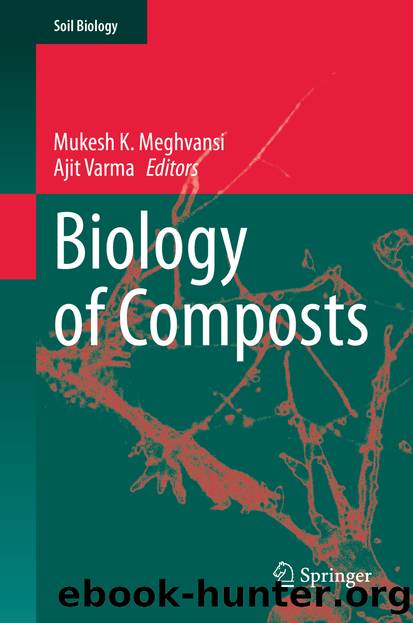Biology of Composts by Unknown

Author:Unknown
Language: eng
Format: epub
ISBN: 9783030391737
Publisher: Springer International Publishing
7.4.2.2 Next-Generation Sequencing (NGS) Technologies
Although the efforts on nucleic acid sequencing started in as early as the 1960s, yet it was only in 1977 when, Sanger was able to sequence the first DNA genome, that of bacteriophage ϕX174. This classical approach employed the plus and minus technique for DNA polymerase to synthesize from a primer with the use of radiolabeled nucleotides. Subsequently, the position of nucleotides in the covered sequence could be discerned by running the products on a polyacrylamide gel and comparing between the eight lanes (Sanger 1977). This is considered as the beginning of first-generation sequencing technologies. Further, a significant improvement in the technique was made by Sanger and Nicklen (1977) through the development of a dideoxy technique that used chemical analogues of the deoxyribonucleotides (dNTPs). In the same year, Maxam and Gilbert described a new method (chemical cleavage technique) that employed the treatment of radiolabeled DNA with chemicals that break the chain at specific bases (Maxam and Gilbert 1977). In 1987, first automated capillary electrophoresis-based sequencing equipment AB370 was introduced in the market by Applied Biosystems. In 1998, AB3730xl, a higher version of this equipment was launched. These two instruments were primarily used for Human Genome projects (Collins et al. 2003). In parallel, serious research efforts continued for improvements in the sequencing technologies. Consequently, massively parallel high-throughput sequencing techniques have been developed that has in recent times revolutionized the way the genetic information is obtained. These next-generation sequencing platforms are not only quick and accurate but cost effective also. For instance, the HiSeq X® TenSystem, launched in 2014, has the capability of sequencing over 45 human genomes in a single day for approximately $1000 (Anonymous 2014). On the contrary, the first human genome mapping took more than a decade at the cost of about three billion dollars. A typical workflow of NGS platform includes random fragmentation of DNA for library preparation, ligation of adaptors (oligos bound to the 5′and 3′ end of each DNA fragment), amplification of library using clonal amplification method/PCR, and then sequencing on automated sequencer (Fig. 7.5). In this section, we discuss some of the most commonly used next-generation sequencing technologies and platforms. Examples of studies carried out using NGS platform for microbial community analysis of compost and vermicompost are provided in Table 7.1.
Fig. 7.5A typical workflow of the NGS platform
Download
This site does not store any files on its server. We only index and link to content provided by other sites. Please contact the content providers to delete copyright contents if any and email us, we'll remove relevant links or contents immediately.
International Integration of the Brazilian Economy by Elias C. Grivoyannis(90927)
The Radium Girls by Kate Moore(11921)
Turbulence by E. J. Noyes(7936)
Nudge - Improving Decisions about Health, Wealth, and Happiness by Thaler Sunstein(7615)
The Black Swan by Nassim Nicholas Taleb(7010)
Rich Dad Poor Dad by Robert T. Kiyosaki(6401)
Pioneering Portfolio Management by David F. Swensen(6226)
Man-made Catastrophes and Risk Information Concealment by Dmitry Chernov & Didier Sornette(5921)
Zero to One by Peter Thiel(5685)
Secrecy World by Jake Bernstein(4644)
Millionaire: The Philanderer, Gambler, and Duelist Who Invented Modern Finance by Janet Gleeson(4374)
The Age of Surveillance Capitalism by Shoshana Zuboff(4209)
Skin in the Game by Nassim Nicholas Taleb(4162)
Bullshit Jobs by David Graeber(4094)
The Money Culture by Michael Lewis(4076)
Skin in the Game: Hidden Asymmetries in Daily Life by Nassim Nicholas Taleb(3929)
The Dhandho Investor by Mohnish Pabrai(3699)
The Wisdom of Finance by Mihir Desai(3651)
Blockchain Basics by Daniel Drescher(3507)
